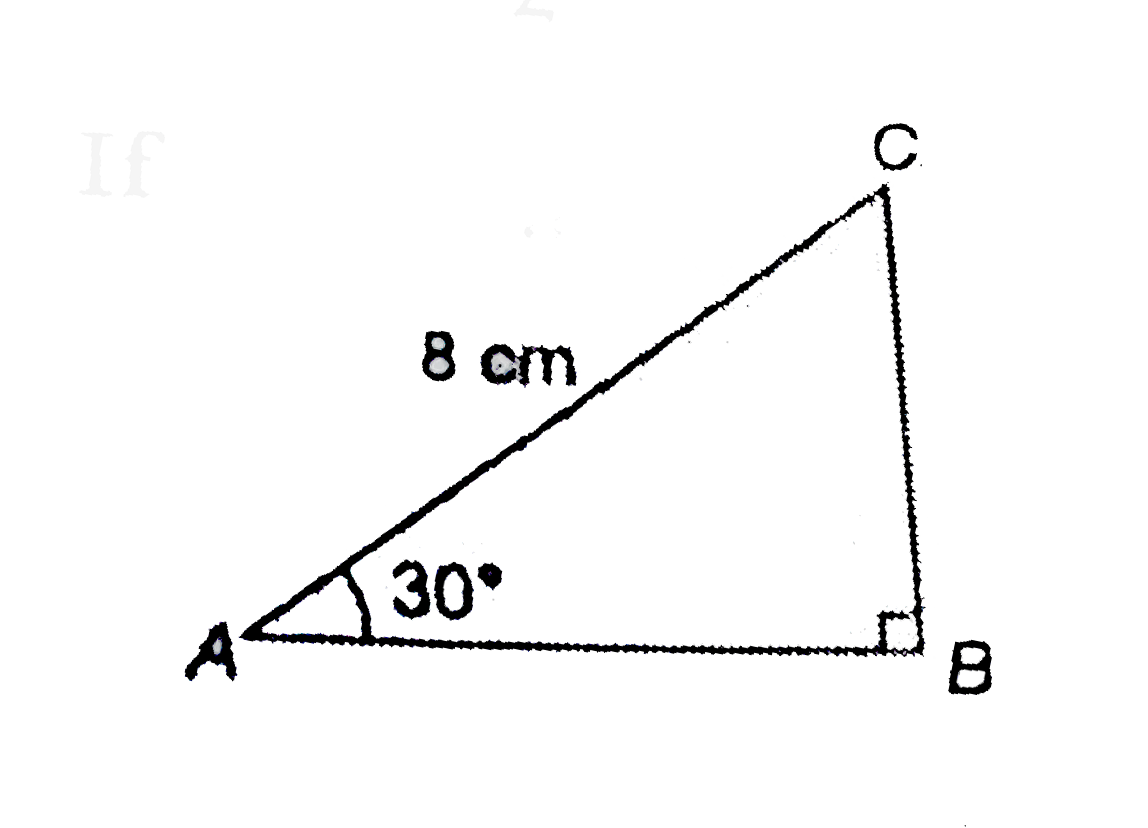If ΔABC is right angled at A,then r2+r3=
r1−r
r1+r
r−r1
R
To solve the problem, we need to find the value of r2+r3 for a triangle ΔABC that is right-angled at A.
1. Identify the Angles:
Since triangle ABC is right-angled at A, we have:
∠A=90∘,∠B+∠C=90∘
2. Use the Sine Rule:
The relationship between the circumradius R and the inradii r1,r2,r3 can be expressed using the sine rule. For a right triangle:
r1−R=4sin2(A2)
Since A=90∘:
sin(90∘2)=sin(45∘)=√22
Thus:
r1−R=4(√22)2=4⋅12=2
3. Calculate r2−R and r3−R:
For angle B:
r2−R=4sin2(B2)
For angle C:
r3−R=4sin2(C2)
4. Express r2+r3:
We want to find r2+r3. We can use the relationships:
r2+r3=(r2−R)+(r3−R)+2R
Thus:
r2+r3=4sin2(B2)+4sin2(C2)+2R
5. Use the Identity:
Since B+C=90∘:
sin2(B2)+sin2(C2)=1
Therefore:
r2+r3=4⋅1+2R=4+2R
6. Substituting R:
The circumradius R for a right triangle can be expressed as:
R=c2
where c is the hypotenuse. Thus:
r2+r3=4+2⋅c2=4+c
Final Result:
The value of r2+r3 can be expressed as:
r2+r3=4+c
Since triangle ABC is right-angled at A, we have:
∠A=90∘,∠B+∠C=90∘
The relationship between the circumradius R and the inradii r1,r2,r3 can be expressed using the sine rule. For a right triangle:
r1−R=4sin2(A2)
Since A=90∘:
sin(90∘2)=sin(45∘)=√22
Thus:
r1−R=4(√22)2=4⋅12=2
For angle B:
r2−R=4sin2(B2)
For angle C:
r3−R=4sin2(C2)
We want to find r2+r3. We can use the relationships:
r2+r3=(r2−R)+(r3−R)+2R
Thus:
r2+r3=4sin2(B2)+4sin2(C2)+2R
Since B+C=90∘:
sin2(B2)+sin2(C2)=1
Therefore:
r2+r3=4⋅1+2R=4+2R
The circumradius R for a right triangle can be expressed as:
R=c2
where c is the hypotenuse. Thus:
r2+r3=4+2⋅c2=4+c
The value of r2+r3 can be expressed as:
r2+r3=4+c
Topper's Solved these Questions
- PROPERTIES OF TRIANGLES AND CIRCLES CONNECTED WITH THEMBOOK - OBJECTIVE RD SHARMA ENGLISHCHAPTER - PROPERTIES OF TRIANGLES AND CIRCLES CONNECTED WITH THEMEXERCISE - Section I - Solved Mcqs
95 Videos
- PROPERTIES OF TRIANGLES AND CIRCLES CONNECTED WITH THEMBOOK - OBJECTIVE RD SHARMA ENGLISHCHAPTER - PROPERTIES OF TRIANGLES AND CIRCLES CONNECTED WITH THEMEXERCISE - SOLVED MCQ
2 Videos
- PLANE AND STRAIGHT LINE IN SPACE BOOK - OBJECTIVE RD SHARMA ENGLISHCHAPTER - PLANE AND STRAIGHT LINE IN SPACE EXERCISE - Chapter Test
31 Videos
- REAL FUNCTIONS BOOK - OBJECTIVE RD SHARMA ENGLISHCHAPTER - REAL FUNCTIONS EXERCISE - Chapter Test
58 Videos
Similar Questions
Knowledge Check
ΔABC is a right angled isosceles triangle and ∠B is the right angle in the triangle. If AC measures 7√2, then which one of the lengths of AB and BC, respectively?
A7,7B9,9C10,10D11,12Which of following indicates that ΔABC is a right triangle?
(I) The angle of ΔABC are in the ratio 1 : 2 : 3.
(II) One of the angles of ΔABC equals the sum of the other two angles.
(III) ΔABC is similar to the right triangle D≤taDEF.AI onlyBII onlyCIII onlyDI,II and III
If ΔABC is right angled at C, then the value of cos(A+B) is
View SolutionConstruct a right angled ΔABC, right angled at A if hypotenuse BC = 5 cm and side AB = 3 cm.
View SolutionIn ΔABC, right - angled at B , AC = 20 cm and tan∠ACB=34 , calculate the measures of AB and BC.
View SolutionIn the adjoining figure , ΔABC is a right - angled triangle , right - angled at B. If ∠A=30∘andAC=8cm, Find (i)BC (ii)AB.

View SolutionIn a ΔABC, show that r1⋅r2⋅r3⋅r=Δ2.
View SolutionR is circumradii of ΔABC,H is orthocentre, R1,R2,R3 are circumradii of ΔAHB,ΔBHC. If AH produced meet the circumradii of ABC at M and intersect BC at L,
∠AHB=180∘−C
csin(180∘−C)=2R1
csinC=2R1
R1=R
Area of ΔAHB
View Solution
